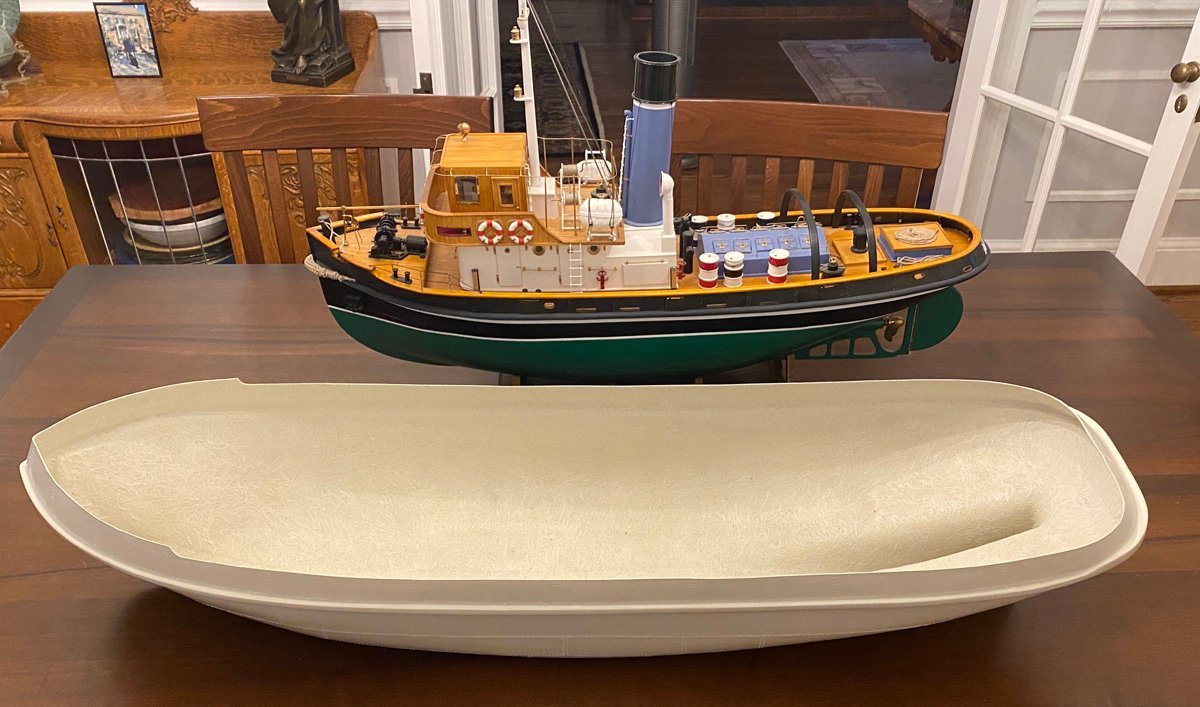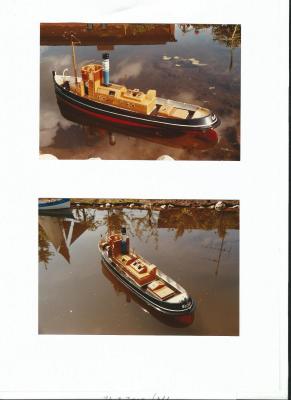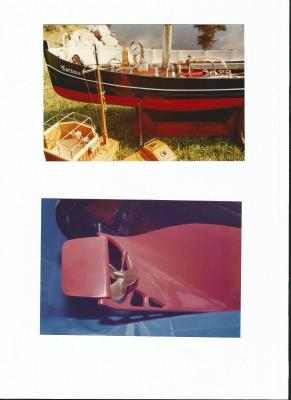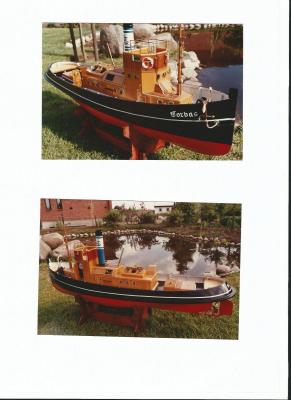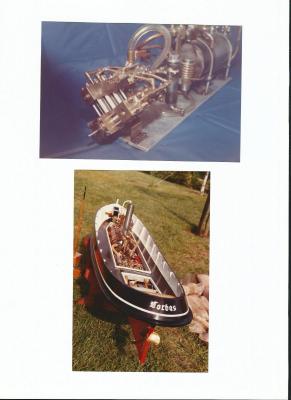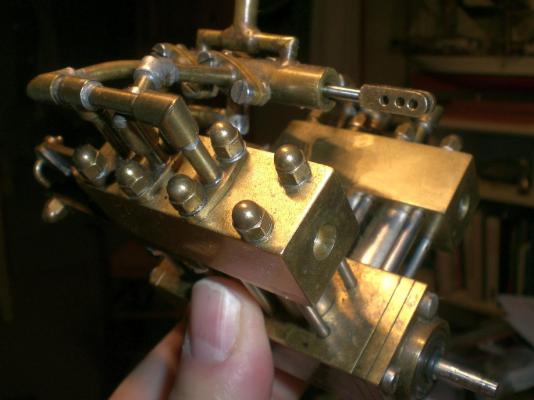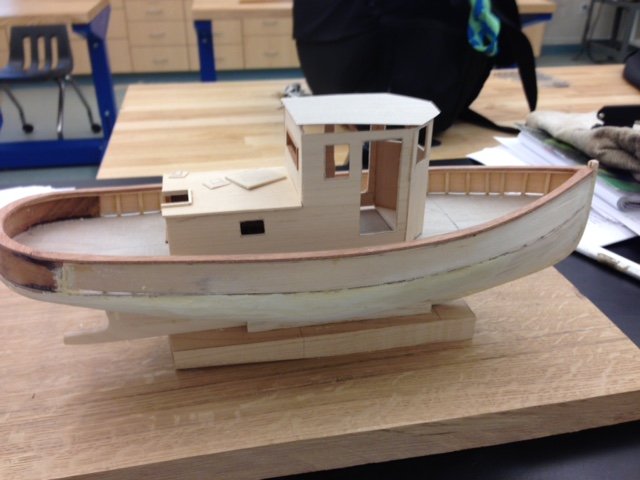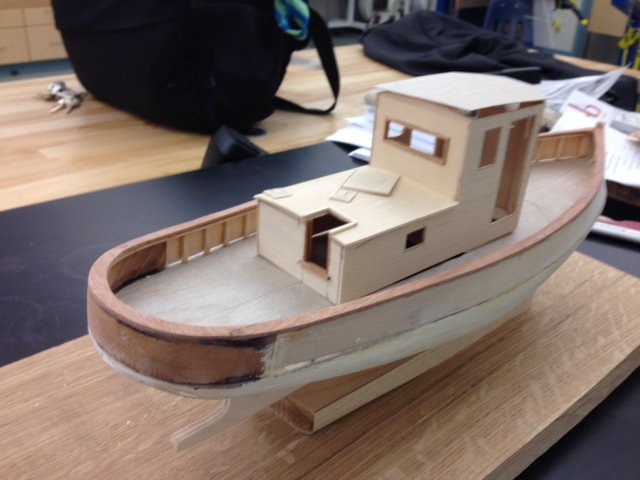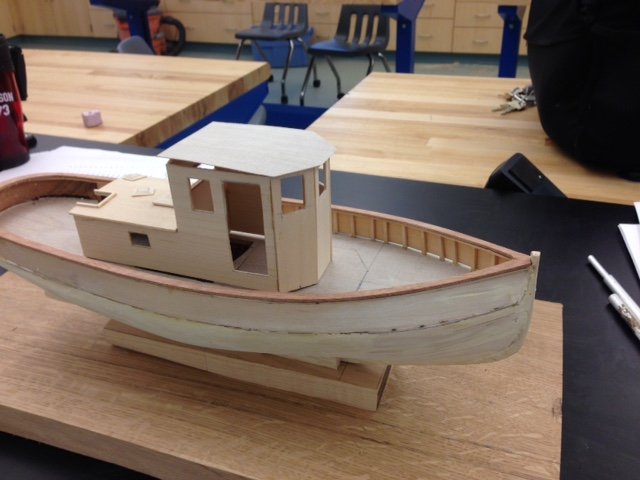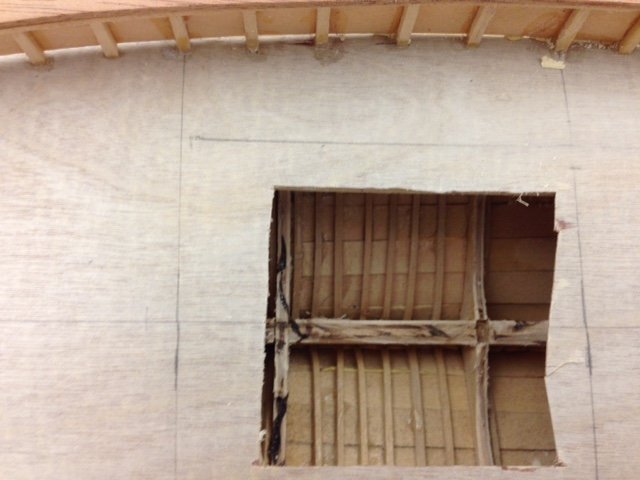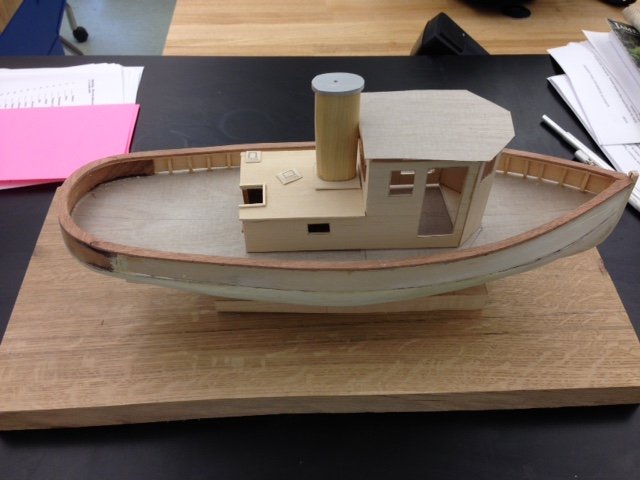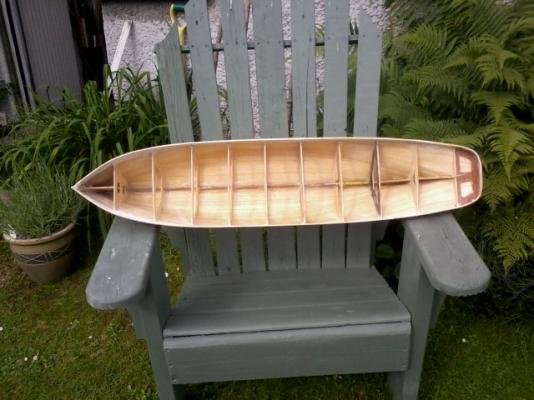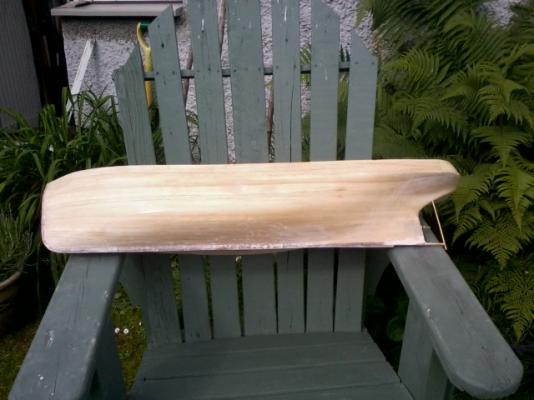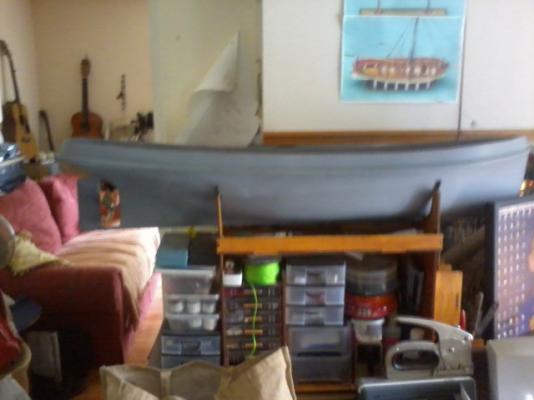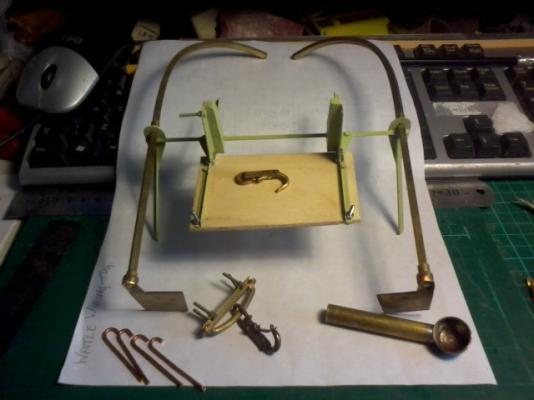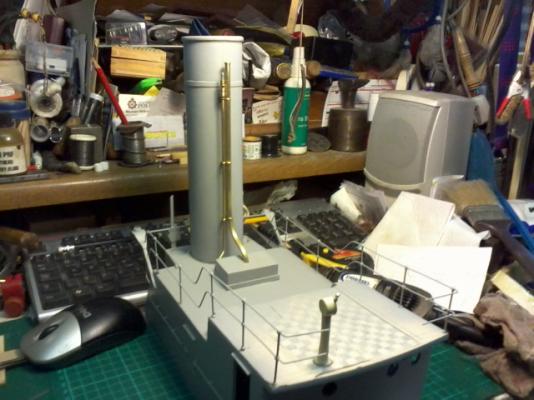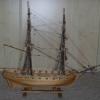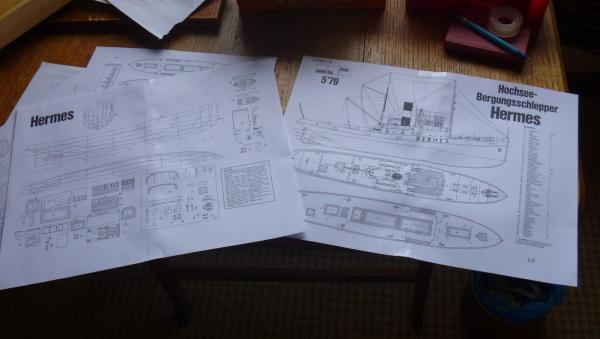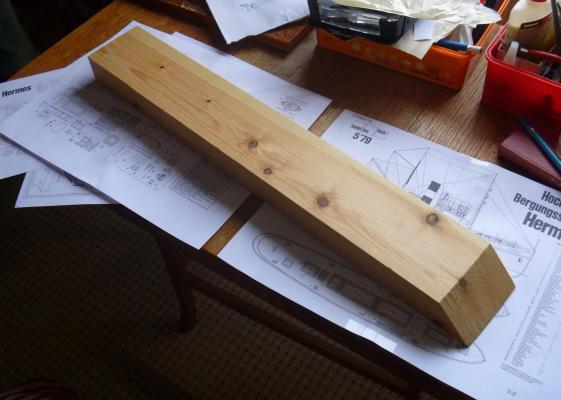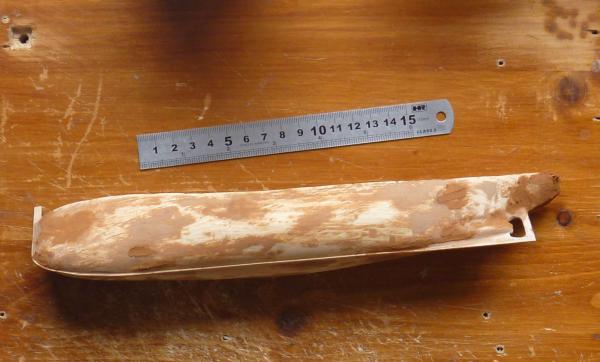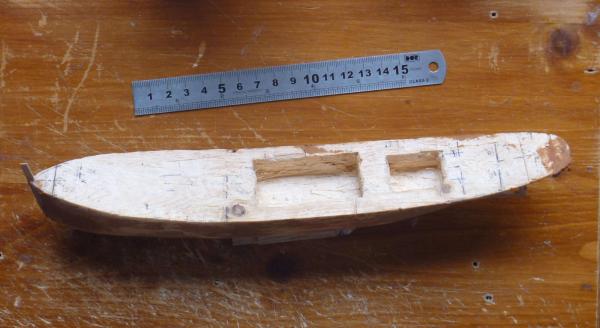Search the Community
Showing results for tags 'Tug'.
-
I've made several ship models in the last 10 years. My best work was on the HM Bark Endeavour by Caldercraft, but the model that gets the most compliments is my Anteo Harbour tug. I've been wanting to build another tug for a while and settled on the Marie Felling by Caldercraft. They offer a couple of other tug kits but they are nearly impossible to find at the moment, so I settled on the Marie Felling. This is a BIG model, 43.5" long. It has a Glass Reinforced Plastic (GRP) hull and superstructure and is clearly made for RC. I just build for the fun of building, and will build this as a static model. Here's a photo of the GRP hull next to my Anteo. MSW has no build logs for Caldercraft tugs or the like, so I hope that this will give the readers some information about this. There are three good build logs on https://www.rcgroups.com, all of RC equipped models of course. Here are links if you're interested. Marie Felling by Longbike Marie Felling by Rmay Marie Felling by Kaskazi
- 50 replies
-
- Marie Felling
- tug
-
(and 3 more)
Tagged with:
-
Hello all, I am going to step away from sails for this build and build a boat I’ve wanted to build for a long time. When I started modeling boats I was in an RC boat club in Indianapolis. We sailed One Meters in the summer and in the winter we ran scale RC boats in indoor swimming pools. That’s when I saw a picture of a fire boat called “The City of Oakland”. I wanted to build it 25” long (1:48 scale) with working water pump and monitors. That was about ten years ago. Since then I have been searching the web for all I could find. And what I found changed my mind as to the build. City of Oakland The City of Oakland was originally the yard tug HOGA YT-146. The keel was laid down 7/25/1940, Launch date was 12/1/1940 and it was delivered to Pearl Harbor 5/1/1941. (This is from the web) City of Oakland, ex-Hoga, is of exceptional significance in American history as the only known surviving yard craft present at Pearl Harbor during the Japanese attack on the U.S. Pacific Fleet on December 7, 1941. Hoga fought fires on Battleship Row for 72 hours. The actions of the tug's skipper and crew did not go unrecognized. On February 1942, ADM. Chester A. Nimitz, CINCPAC, commended McManus, his men, and their tug for a job well done: “For distinguished service in line of your profession as Commanding Officer of the Navy Yard Tug HOGA, and efficient action and disregard of your own personal safety during the attack.... When another ship was disabled and appeared to be out of control, with serious fires on the fore part of that ship, you moored your tug to her bow and assisted materially in extinguishing the fires. When it was determined that the damaged ship should be beached, as there was serious danger of her sinking in the channel, you assisted in the beaching operations in an outstanding manner. Furthermore, each member of the crew of the HOGA functioned in a most efficient manner and exhibited commendable disregard of personal danger throughout the operations.” Placed on loan to the Port of Oakland, California, in 1948, it was returned to the navy after 40 years of service. Recently it was awarded to the City of North Littlerock, AR. to be in their museum. At present it is in a boat yard near San Francisco being prepared for transport to North Littlerock Hoga is one of about 30 of the Woban YT-138 class. The problem in this build is that there are no line drawings of this boat. I have many, many pictures and internal equipment drawings but no lines. I hope to build the Hoga as it was at Pearl Harbor prior to the attack. I got the build plans for the Billing’s kit and I will scale the bulkheads and keel to 1:96 and see where to go from there. So wish me luck and follow along with me. Bob Hoga at sea trials Hoga at Paerl Harbor
-
Introduction : This project has been completed already in the years 1984 / 1985, when I was still a young man. I had the intension of building my own designed steam engine for a model ship. A regular steam engine with crosshead-guides and Stephenson reversing control device, was too complicated to build, in lack of neighther lathe nor milling machine (still do`nt have….). So I decided to design a steam-motor with a minimum on moving parts, and yet powerful enough to propell an appr. 1100 mm long RC controlled ship model. And the driving challenge was also to see if I could do it anyway…… Current status : After some years of perfect performance, the boiler became a hair crack leakage in one or two of the inner heating tubes solderings, that unfortunately could not be mended without destroying the boiler. So neighther ship nor motor had been moved since. I wanted to rotate the motor the other day by trying to rotate the crankshaft but all was blocked somewhere, probably the pistons are sticking to the cylinder walls. Shall have to dismantle everything completely for overhaul, and build a new boiler if I want to have fun on that behalf again. Fortunately the was a raghther short little super 8 Kodak film made of the model travelling on the lake at full steam in those wayback years, the film in miserable quality, but at least a document of a successfully completed project. I`ll try to put that film in a little video here on MSW in this log later on. Some of the pictures I found fortunately in my photo-archive and scaned them in, and was myself surprised that I even had pics of motor complete, and boiler in the building stage. I thought this may be of interest for the one or other fellow builder here at MSW. The ship itself is still ready to be launched at any time, only the prop has a bit patina on it The ship Model-length 1090 mm Steam powered, gas fired, RC controlled, fictional version river tug “Lorbas” in nostalgic look Model Build year : 1984 / 1985 Ship is POB scratch design, self drawn lines, ply frames and diagonal planked with balsa stripes, Hull coated with glass-fibre rowing cloth and epoxy resin Removable deck housings and many maintenance opening hatches and doors, and ventillation openings for the boiler- and machine room large self made 80 mm 4-blade brass propeller RC control Simple oldtimer 2-channel radio-controller, Make “Robbe” and on the ship two-channel receiver and two servos (one for steam reverse valve, stop, foreward, aft) one for rudder port / stb. One power pack comprising 4 x 1,5 V mignon Batteries. I`m not allowed to use this RC equipment any more due to national postal radio frequency regulations The Engine Self designed Six cylinder Steam motor in Vee-6 design, for superheated steamflow, with direct piston rods to crankshaft, ball bearing crankrod head-bearings, each cylinderhead with common, horizontal working slide cam control bars, manifolds for steam inlet and steam outlet (reversible) Steam reverse valve (for swapping inlet / outlet channels with RC servo function. Motor designed for 2 bar constant steam backpressure when running at 200 RPM in direct (quick disconnectable) coupling to propshaft Idle unbreaked motor runs up to 3000 RPM, if control cam positions are set correct Model speed like modest walking pedestrian Lubrication by means of oiler-device in live steam line (high viscosity steam engine oil) Piston rings made of Teflon in circumferential pistenring grooves Manifold gaskets made from Viton O-rings (heat resistant) Elbow- and t-fittings and flanges silver soldered, tubes soft soldered in Materials: brass and stainless steel and commercial available bearings Six Cylinders 10 mm diam. X 10 mm strokelength Due to the six cylinder arrangement the motor is capable of starting rotation at any crank position The boiler It was my aim to create a powerful lightweight design for firing with butan gas burner and gas from commercial, exchangeable cylindrical cartridges that fit into the boat (like used for refueling cigarette lighters). Function: The boiler has one central flame-tube cross-spicked through with 6 smaller instant steam tubes that mount into the area of the upper steam collector dome. The hot gas of the flametube then reverses direction in the outer end-camber, that also contains the superheater tube coil and from there 13 heating air tubes lead back through the boiler, into the opposite chamber that takes up the chimney tube (inner liner of the ships funnel) The waste steam tube is connected to the inner chimney liner in order to burn out the micro-oil-fume of the exhaust steam in the upstreaming hot air together with the firing exhaust. (avoid lakewater pollution !) The safe running time with one distilled boiler-water filling is 20 minutes The boiler is capable of providing constantly 2 bar backpressure at ships full speed The boiler is equipped with a stand, wooden plank cladding, a blow off safety valve, a pressure gauge, a main steam valve, an oiling device, a water level indicator, a draining point, and a heat exchanger for pre-heating the expanding butan gas from the gas cartridge The boiler is mounted to a common aluminium baseplate that also takes up the motor mounting bracket and the burner mounting bracket. To fire up the boiler, the flame tube is heated with a external (more powerful) gas tourch outside the ship. When reaching 2 bar steam pressure the complete baseplate is set into the ship from above Materials: Boiler complete from stainless steel, silver soldered, pressure tested with 4 bar Enjoy...... Nils
-
Akbar was designed by Sam Crocker as the harbor work boat for the boatyard in Manchester MA. Designed in 1951, the boat was used until the early 2000's when it was replaced by her sister ship Masconomo II. I chose to build this boat as it was great to see such a small tug moving about the harbor. I also really liked the look of the mast and gaff tackle. I have built a number of plank on bulkhead models and wanted the challenge of building the curved stern transom. ( I had looked at doing a draketail, but figured I would try this first) I am sorry I joined this group after I began the build, and hope that I can catch you all up on what has gone on so far. The keel is birch plywood as were the bulkheads. I steam bent a number of rib frames into the hull because I want them to be visible through the companionway and windows. I am in the process of carving a model of a Gray Marine 6-330 to fit into the engine room so that it too may be seen through the windows and the companionway. Today I turned the winch barrel and the display mounts from aluminum. ( It's what I had around ) My next step will be to make the interior dashboard and seat for the wheelhouse as well as complete the mahogany trim for the windows.
-
The Wattle was built in Australia 1933 I didnt start taking pictures of the initial start of building as it had not crossed my mind at the time to do a build log its the first time and I am a bit shaky as to how to go on, so here are some of the first pictures, after final layer of glass tissue and propeller tube and shaft fitted sorry about the poor picture, this was quite a big jump to fitting the rudder and the sponson another leap in time whilst the resin was curing I built other parts wheelhouse, winch, lifeboat part of davits and l/boat cradle latest updates are brass-work on funnel more to come as I progress mick
-
I wanted to try a tug, but smaller than the 800mm or so of the kits I could find - I like the look of the Occre Ulises, but not the size! I found some plans for the Hermes, a German tug of 1923. I've reduced them to 1/150 approx, which gives a length of 285mm. There will be some modifications: She'll be single-screw not twin, for a couple of reasons: I just think it looks better, and for the machinery space. Which leads to the second mod: she has two cutouts on deck as you can see, and she'll have lift-off deckhouses to show interior detail. The aft space is for a single reciprocating engine (hence single-screw) and the fore space for boilers; I think the original was diesel, but steam will give more scope for details. Also, the compass platform is to be removable, to show the bridge interior. Also, I may build more in timber rather than steel plate, which I think may be more in keeping, but this is open to revision. The attached pictures show the plans; the raw material (a piece of left-over building timber); and the hull as at present, part-way through filling/sanding. The deck openings will be lined, probably in card, so the unfinished interior sides aren't very important although I will tidy them up; the openings are about 5mm larger than the opening in the deck planking will be, to give the impression of depth. Note the German dictionary in the first two pics: I need help identifying the Pilzkopflufter (9 of them) and the single Verspannung Schornstein.
-
Hi friends, I came across a book that might be of interest to those who are interested in old steamships, tugs and other port vessels, or simply in ice-breaking itself. Documentation is rare. Here's the review: M. Görz und M. Buchheister Das Eisbrechwesen im Deutschen Reich Reprint der Ausgabe von 1900 (Icebreaking in the German Reich) (Reprint of the book from 1900) This book is a most complete documentation of the ice-breaking business in imperial Germany. Authored by M. Görz and M. Buchheister, both were directors of waterway administration in imperial Germany and therefore experts on ice-breaking business. When this book was compiled, ice-breaking was quite a young shipping discipline: Just for 25 years this bunch of specialised ships was in existence. The German Imperial Reich, by itself just a quarter of a century young, developed to a mighty industrial nation. Steam power and industrialisation did change the structure of the economy in deep and the volume of transportation increased dramatically. Ice on the waterways and in the ports, as was normal since ever, now disturbed the growth of economy, since production went on in summer as in winter times, materials had to be supplied and products had to be delivered. Another aspect of the ice-breaking business is the prevention of severe flooding of the river neighbouring communities due to ice barriers building up. Continuos ice-breaking by ships during the winter time could prevent this. This principle works until today. Germany was united in 1871/72 to a single imperial Reich. Thus centralised, the administration started work on a number of development projects, so the foundation, development and refinement of infrastructure projects throughout the Reich. The objective to keep waterways open for the whole year, could be tackled with the newly developed iron ships with a reliable steam propulsion. It still needed some research on the optimal shape of the hull, especially the bow and the ship‘s construction to withstand the brutal forces of the ice. At first, the book leads through the geographic facts of the rivers and waterways in focus, the technique of ice-breaking to move on to the technical facts of the ice-breaking vessels on the various arenas. In Germany, the waterways showed a wide variety in terms of location, size, ability to serve as a waterway, climate conditions, shipping volume, ports and, finally, the icing conditions: Located in the east of Germany with it‘s harsh winters the Weichsel, Nogat, Memel, Pregel, the port of Danzig and the river Oder. In the north the port of Kiel with the Kaiser-Wilhelm-Kanal (the Kiel canal), the port of Flensburg. In the west the rivers Elbe, Weser, Rhine with the ports of Hamburg, Cuxhaven, Bremen and Bremerhaven, Duisburg. The first chapter is focused on geography and ice-breaking in general, which didn‘t happen exclusively by ships. Especially usage of explosives is given some room, but at the end, long-term minded ice-breaking can only be done by specialised ships. The second chapter focuses on ice-breaking ships in the various scenarios and regions. Information is provided about purchasing, design and construction, specialties, sizes and measures, technical data of the vessels, especially about those: „Eisbrecher I“ (Hamburg 1871), „Eisbrecher II“ (Hamburg 1877), „Hofe“ (Hamburg 1877), „Trave“ (Stettin 1879), „Weichsel“ (Danzig 1880), „Montau“ (Danzig 1882), „Simson“ (Hamburg 1883), „Ossa“ (Danzig 1884), „Ferse“ (Danzig 1884), „Königsberg“ (Elbing 1885), „Stettin“ and „Swinemünde“ (Stettin 1888), „Siegfried“ (Kiel 1888), „Berlin“ (Stettin 1889), „Nogat“ (Danzig 1889), „Möwe“ (Hamburg 1889), „Wal“ (Uebigau n. Dresden, 1889), „Delphin“ and „Robbe“ (Uebigau n. Dresden 1889), „Wodan“ (Bremen 1889), „Lüneburg“ (Hamburg 1890), „Steknitz“ (Lübeck 1891), „Eisbrecher III“ (Hamburg 1892), „Elbe“ (Hamburg 1892), „Eisbär“ and „Walross“ (Stettin 1892), „Widder“ (Stettin 1892), „Molch“ and „Salamander“ (Uebigau n. Dresden 1892), „Donar“ (Bremen 1892), „Schwarzwasser“ (Danzig 1894), „Brahe“ (Elbing 1894), „Prussina“ (Danzig 1894), „Scorpion“ (Uebigau n. Dresden 1895), „Drewenz“ (Schichau 1896), „Welle“ (Danzig 1896), „Schlange“, „Eidechse“ and „Drache“ (Uebigau n. Dresden 1892), „Fribbe“ (Danzig 1898), „Wakenitz“ (Lübeck 1899) The third chapter give insights into operations, effects and costs of an ice-breaker. Besides a view into the economical figures of ice-breaking operations, the authors show various operation profiles ind the various environments (medium river, large river, port, near-shore sea bay). By the documentation of chapters 1 and 3, the reader gains a good insight into the „ice business“. The annex to the book includes reproductions of maps of the mentioned waterways, graphical statistics to climate and ice data, and a number of drawings of some of the mentioned ice-breaking vessels. This is usually a look to the side, from the top, from the bow, some cutaways and a frame line drawing: „Weichsel“ (Danzig 1880), „Ossa“ (Danzig 1884), „Ferse“ (Danzig 1884), „Nogat“ (Danzig 1889), „Schwarzwasser“ (Danzig 1894), „Welle“ (Danzig 1896), „Fribbe“ (Danzig 1898), „Stettin“ and „Swinemünde“ (Stettin 1888), „Berlin“ (Stettin 1889), „Trave“ (Stettin 1879), „Eisbrecher III“ (Hamburg 1892), „Elbe“ (Hamburg 1892), „Hofe“ (Hamburg 1877), „Möwe“ (Hamburg 1889), „Wal“ (Uebigau b. Dresden, 1889), „Delphin“ and „Robbe“ (Uebigau n. Dresden 1889), „Walross“ (Stettin, 1892), „Widder“ (Stettin 1892), „Lüneburg“ (Hamburg 1890), „Donar“ (Bremen 1892), The Maps and technical drawings of the annex could not be reproduced in the original size due to technical reasons. Originally, the vessel‘s drawings are in 1:100 scale. The editor of the reprint offers a service to provide those pages as in the original book size or in a scale specified by the reader: So, if you want to build a model in 1:48 scale, you can order the plans in 1:48 right away. A order form is provided with the book. Super! Summary: The well-known author focused on ice-breaking vessels, Christian Ostersehlte, said it this way: „For the Paris World Exhibition in 1900, the waterway administration directors Görz (Danzig) and Buchheister (Hamburg) issued a big-body book to be a standard documentation about the ice breaking business in Germany. Since many archives (especially in the eastern part of Germany) have disappeared since, this rich designed book for todays historians means a fountain of information about the early history of ice-breaking business in Germany.“ Whoever is interested in the history of waterway shipping, tugs and ice-breakers, especially about steam propelled working-vessels around 1900, should know this book; This documentation is now available in a good reproduction for the own archive. ISBN 978-3-8495-0293-5, hardcover, 308 pp, many images: 250,-€; available in bookshops, internet bookshops or from the reprint‘s editor: Helmut Wedemeyer, Kohlmarkt 22, 25554 Wilster, Germany. (e-mail: info@wedemeyer.de) Image: exemplary drawing #30 - Eisbrecher „Trave“ (editors allowed publication of sample image)
About us
Modelshipworld - Advancing Ship Modeling through Research
SSL Secured
Your security is important for us so this Website is SSL-Secured
NRG Mailing Address
Nautical Research Guild
237 South Lincoln Street
Westmont IL, 60559-1917
Model Ship World ® and the MSW logo are Registered Trademarks, and belong to the Nautical Research Guild (United States Patent and Trademark Office: No. 6,929,264 & No. 6,929,274, registered Dec. 20, 2022)
Helpful Links
About the NRG
If you enjoy building ship models that are historically accurate as well as beautiful, then The Nautical Research Guild (NRG) is just right for you.
The Guild is a non-profit educational organization whose mission is to “Advance Ship Modeling Through Research”. We provide support to our members in their efforts to raise the quality of their model ships.
The Nautical Research Guild has published our world-renowned quarterly magazine, The Nautical Research Journal, since 1955. The pages of the Journal are full of articles by accomplished ship modelers who show you how they create those exquisite details on their models, and by maritime historians who show you the correct details to build. The Journal is available in both print and digital editions. Go to the NRG web site (www.thenrg.org) to download a complimentary digital copy of the Journal. The NRG also publishes plan sets, books and compilations of back issues of the Journal and the former Ships in Scale and Model Ship Builder magazines.


